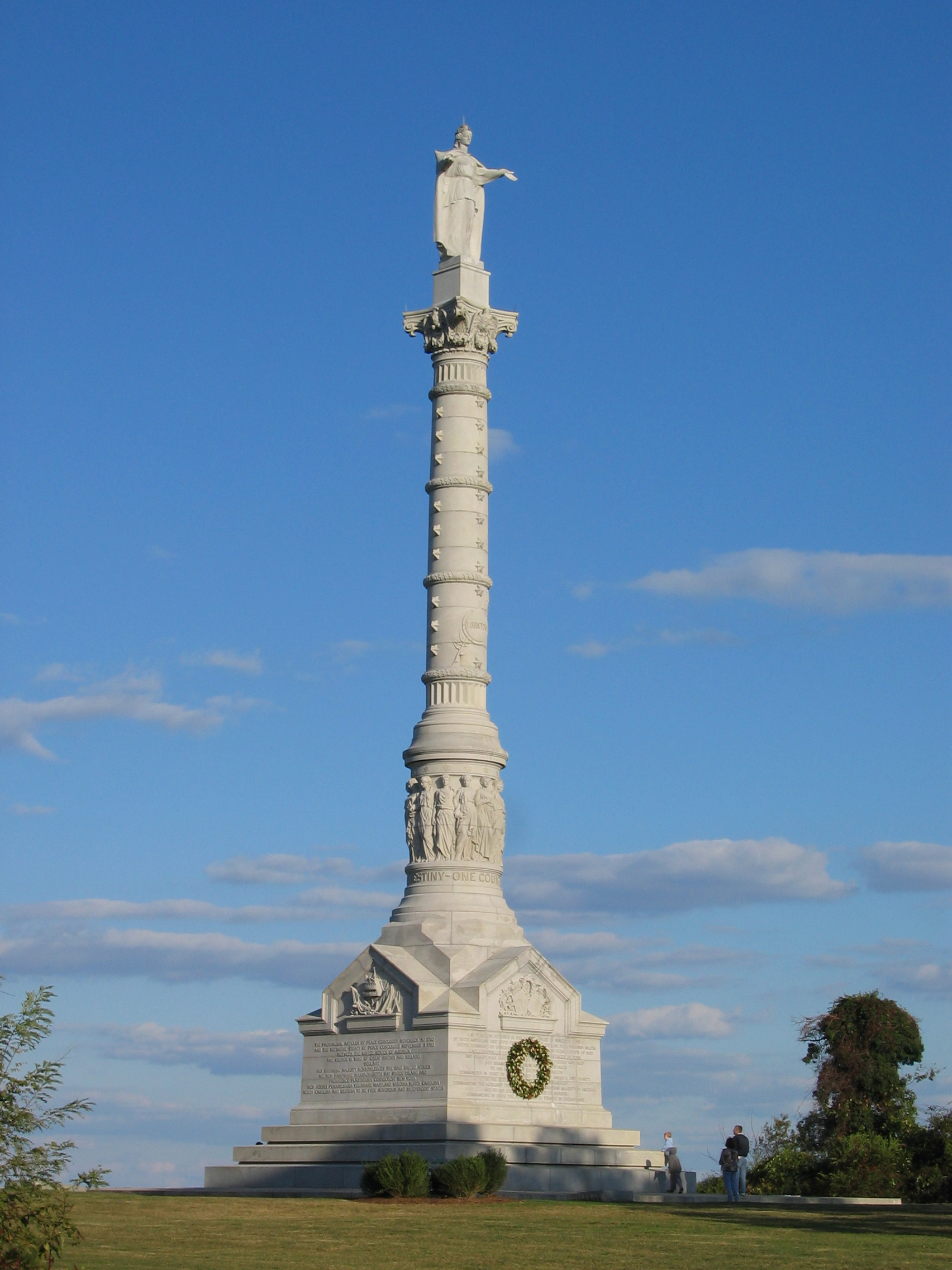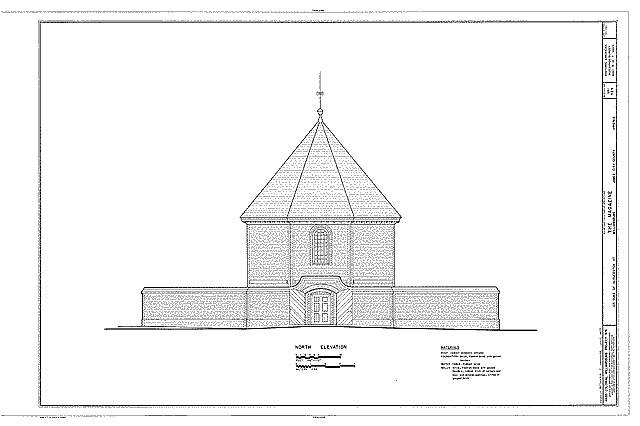|
Dunmore's Proclamation
Dunmore's Proclamation is a historical document signed on November 7, 1775, by John Murray, 4th Earl of Dunmore, royal governor of the British Colony of Virginia. The proclamation declared martial law and promised freedom for slaves of American revolutionaries who left their owners and joined the royal forces, becoming Black Loyalists. Most relevant historians agree that the proclamation was chiefly designed for practical and militaristic reasons rather than moral reasons, such as humanitarianism. Formally proclaimed on November 15, its publication prompted between 800 and 2000 slaves (from both patriot and loyalist owners) to run away and enlist with Dunmore. It also raised a furor among Virginia's slave-owning elites (again of both political persuasions), to whom the possibility of a slave rebellion was a major fear. The proclamation ultimately failed in meeting Dunmore's objectives; he was forced out of the colony in 1776, taking about 300 former slaves with him. The 1779 ... [...More Info...] [...Related Items...] OR: [Wikipedia] [Google] [Baidu] |
John Murray, 4th Earl Of Dunmore
John Murray, 4th Earl of Dunmore (1730 – 25 February 1809), known as Lord Dunmore, was a British nobleman and colonial governor in the American colonies and The Bahamas. He was the last colonial governor of Virginia. Lord Dunmore was named governor of the Province of New York in 1770. He succeeded to the same position in the Colony of Virginia the following year, after the death of Norborne Berkeley, 4th Baron Botetourt. As Virginia's governor, Dunmore directed a series of campaigns against the trans-Appalachian Indians, known as Lord Dunmore's War. He is noted for issuing a 1775 document ( Dunmore's Proclamation) offering freedom to any enslaved person who fought for the Crown against the Patriots in Virginia. Dunmore fled to New York after the Burning of Norfolk in 1776 and later returned to Britain. He was Governor of the Bahama Islands from 1787 to 1796. Family and early life Murray was born in Taymouth, Scotland, the eldest son of William Murray, 3rd Earl of ... [...More Info...] [...Related Items...] OR: [Wikipedia] [Google] [Baidu] |
Royal Proclamation Of 1763
The Royal Proclamation of 1763 was issued by King George III on 7 October 1763. It followed the Treaty of Paris (1763), which formally ended the Seven Years' War and transferred French territory in North America to Great Britain. The Proclamation forbade all settlements west of a line drawn along the Appalachian Mountains, which was delineated as an Indian Reserve. Exclusion from the vast region of Trans-Appalachia created discontent between Britain and colonial land speculators and potential settlers. The proclamation and access to western lands was one of the first significant areas of dispute between Britain and the colonies and would become a contributing factor leading to the American Revolution. The 1763 proclamation line is situated similar to the Eastern Continental Divide, extending from Georgia to the divide's northern terminus near the middle of the northern border of Pennsylvania, where it intersects the northeasterly St. Lawrence Divide, and extends further th ... [...More Info...] [...Related Items...] OR: [Wikipedia] [Google] [Baidu] |
House Of Burgesses
The House of Burgesses was the elected representative element of the Virginia General Assembly, the legislative body of the Colony of Virginia. With the creation of the House of Burgesses in 1642, the General Assembly, which had been established in 1619, became a bicameral institution. From 1642 to 1776, the House of Burgesses was an instrument of government alongside the royally-appointed colonial governor and the upper-house Council of State in the General House. When the Virginia colony declared its independence from the Kingdom of Great Britain at the Fifth Virginia Convention in 1776 and became the independent Commonwealth of Virginia, the House of Burgesses became the House of Delegates, which continues to serve as the lower house of the General Assembly. Title ''Burgess'' originally referred to a freeman of a borough, a self-governing town or settlement in England. Early years The Colony of Virginia was founded by a joint-stock company, the Virginia Company, ... [...More Info...] [...Related Items...] OR: [Wikipedia] [Google] [Baidu] |
Yorktown, Virginia
Yorktown is a census-designated place (CDP) in York County, Virginia. It is the county seat of York County, one of the eight original shires formed in colonial Virginia in 1682. Yorktown's population was 195 as of the 2010 census, while York County's population was 66,134 in the 2011 census estimate. The town is most famous as the site of the siege and subsequent surrender of General Charles Cornwallis to General George Washington and the French Fleet during the American Revolutionary War on October 19, 1781. Although the war would last for another year, this British defeat at Yorktown effectively ended the war in North America. Yorktown also figured prominently in the American Civil War (1861–1865), serving as a major port to supply both northern and southern towns, depending upon who held Yorktown at the time. Yorktown is one of three sites of the Historic Triangle, which also includes Jamestown and Williamsburg as important colonial-era settlements. It is the eastern ... [...More Info...] [...Related Items...] OR: [Wikipedia] [Google] [Baidu] |
Frigate
A frigate () is a type of warship. In different eras, the roles and capabilities of ships classified as frigates have varied somewhat. The name frigate in the 17th to early 18th centuries was given to any full-rigged ship built for speed and maneuverability, intended to be used in scouting, escort and patrol roles. The term was applied loosely to ships varying greatly in design. In the second quarter of the 18th century, the 'true frigate' was developed in France. This type of vessel was characterised by possessing only one armed deck, with an unarmed deck below it used for berthing the crew. Late in the 19th century (British and French prototypes were constructed in 1858), armoured frigates were developed as powerful ironclad warships, the term frigate was used because of their single gun deck. Later developments in ironclad ships rendered the frigate designation obsolete and the term fell out of favour. During the Second World War the name 'frigate' was reintroduced to ... [...More Info...] [...Related Items...] OR: [Wikipedia] [Google] [Baidu] |
Colonial Williamsburg
Colonial Williamsburg is a living-history museum and private foundation presenting a part of the historic district in the city of Williamsburg, Virginia, United States. The Colonial Williamsburg Foundation has 7300 employees at this location and . (Employees figure is .) There are 37 companies in The Colonial Williamsburg Foundation corporate family. Its historic area includes several hundred restored or re-created buildings from the 18th century, when the city was the capital of Colonial Virginia; 17th-century, 19th-century, and Colonial Revival structures; and more recent reconstructions. An interpretation of a colonial American city, the historic area includes three main thoroughfares and their connecting side streets that attempt to suggest the atmosphere and the circumstances of 18th-century Americans. Costumed employees work and dress as people did in the era, sometimes using colonial grammar and diction (although not colonial accents). In the late 1920s, the restorati ... [...More Info...] [...Related Items...] OR: [Wikipedia] [Google] [Baidu] |
Governor's Palace (Williamsburg, Virginia)
The Governor's Palace in Williamsburg, Virginia, was the official residence of the royal governors of the Colony of Virginia. It was also a home for two of Virginia's post-colonial governors, Patrick Henry and Thomas Jefferson, until the capital was moved to Richmond in 1780, and with it the governor's residence. The main house burned down in 1781, though the outbuildings survived for some time after. The Governor's Palace was reconstructed in the 1930s on its original site. It is one of the two largest buildings at Colonial Williamsburg, the other being the Capitol. History Williamsburg was established as the new capital of the Virginia colony in 1699, and served in that capacity until 1780. During most of that period, the Governor's Palace was the official residence of the royal governor. Construction and design The palace was funded by the House of Burgesses in 1706 at the behest of Lt. Governor Edward Nott. It was built from 1706 onward. In 1710, its first official reside ... [...More Info...] [...Related Items...] OR: [Wikipedia] [Google] [Baidu] |
Blackwell Publishing
Wiley-Blackwell is an international scientific, technical, medical, and scholarly publishing business of John Wiley & Sons. It was formed by the merger of John Wiley & Sons Global Scientific, Technical, and Medical business with Blackwell Publishing in 2007.About Wiley-Blackwell John Wiley & Sons, Inc. Wiley-Blackwell is now an imprint that publishes a diverse range of academic and professional fields, including , , , |
Gunpowder Incident
The Gunpowder Incident (or Gunpowder Affair) was a conflict early in the American Revolutionary War between Lord Dunmore, the Royal Governor of the Colony of Virginia, and militia led by Patrick Henry. On April 20, 1775, one day after the Battles of Lexington and Concord (and well before news of those events reached Virginia), Lord Dunmore ordered the removal of the gunpowder from the magazine in Williamsburg, Virginia to a Royal Navy ship. This action sparked local unrest, and militia companies began mustering throughout the colony. Patrick Henry led a small militia force toward Williamsburg to force return of the gunpowder to the colony's control. The matter was resolved without conflict when a payment of £330 was made to Henry. Dunmore, fearing for his personal safety, later retreated to a naval vessel, ending royal control of the colony. Background Military tensions began to rise in the British colonies of North America in 1774 when a series of legislative acts by the B ... [...More Info...] [...Related Items...] OR: [Wikipedia] [Google] [Baidu] |
Second Continental Congress
The Second Continental Congress was a late-18th-century meeting of delegates from the Thirteen Colonies that united in support of the American Revolutionary War. The Congress was creating a new country it first named "United Colonies" and in 1776 renamed "United States of America." It convened in Philadelphia on May 10, 1775, with representatives from 12 of the colonies. This came shortly after the Battles of Lexington and Concord and was in succession to the First Continental Congress which met from September 5 to October 26, 1774. The Second Congress functioned as a ''de facto'' national government at the outset of the Revolutionary War by raising armies, directing strategy, appointing diplomats, and writing petitions such as the Declaration of the Causes and Necessity of Taking Up Arms and the Olive Branch Petition. All thirteen colonies were represented by the time the Congress adopted the Lee Resolution which declared independence from Britain on July 2, 1776, and the ... [...More Info...] [...Related Items...] OR: [Wikipedia] [Google] [Baidu] |
American Revolution
The American Revolution was an ideological and political revolution that occurred in British America between 1765 and 1791. The Americans in the Thirteen Colonies formed independent states that defeated the British in the American Revolutionary War (1775–1783), gaining independence from the The Crown, British Crown and establishing the United States of America as the first nation-state founded on Age of Enlightenment, Enlightenment principles of liberal democracy. Colonial history of the United States, American colonists objected to being taxed by the Parliament of Great Britain, a body in which they had no taxation without representation, no direct representation. Before the 1760s, Britain's American colonies had enjoyed a high level of autonomy in their internal affairs, which were locally governed by colonial legislatures. During the 1760s, however, the British Parliament passed a number of acts that were intended to bring the American colonies under more direct rule f ... [...More Info...] [...Related Items...] OR: [Wikipedia] [Google] [Baidu] |






